Before I really unpack the Mobile Pixels Geminos T dual stacked desktop monitor, it’s worth pointing something out: While it does fold down, it is not the portable dual display solution that some online retailers seem to think it is. Don’t expect this to collapse into something resembling an oversized laptop to take with you on your travels. Even the largest laptop backpack won’t cater for the Geminos T. It is foldable for easier transport – but in the back of a car, not slung over your arm. Mobile Pixels itself doesn’t class this as portable.
It’s a serious heavyweight in most other regards too, as the stand and mount are solid metal with enough stability to support those twin 24-inch 1080p displays. And each monitor seems built to withstand a warzone, with full metal back panels. The base also incorporates two speakers, a network card, twin HDMI and USB-C ports, a headphone port and a USB hub. The top monitor boasts a webcam with a microphone, and (unlike the Geminos X version) the lower monitor here is actually a touchscreen display.
All of that extra screen space and functionality adds up to a whopping 10.8kg – it may not be a mobile dual display solution for your laptop, but it is a robust all-in-one dual monitor solution with integrated peripherals. It’s ideal for those who want two vertically stacked screens and a minimal bezel for pure clutter-free productivity (albeit at Full HD resolution). Read on for the full review and see what else I discovered about the Mobile Pixels Geminos T dual stacked desktop monitor.
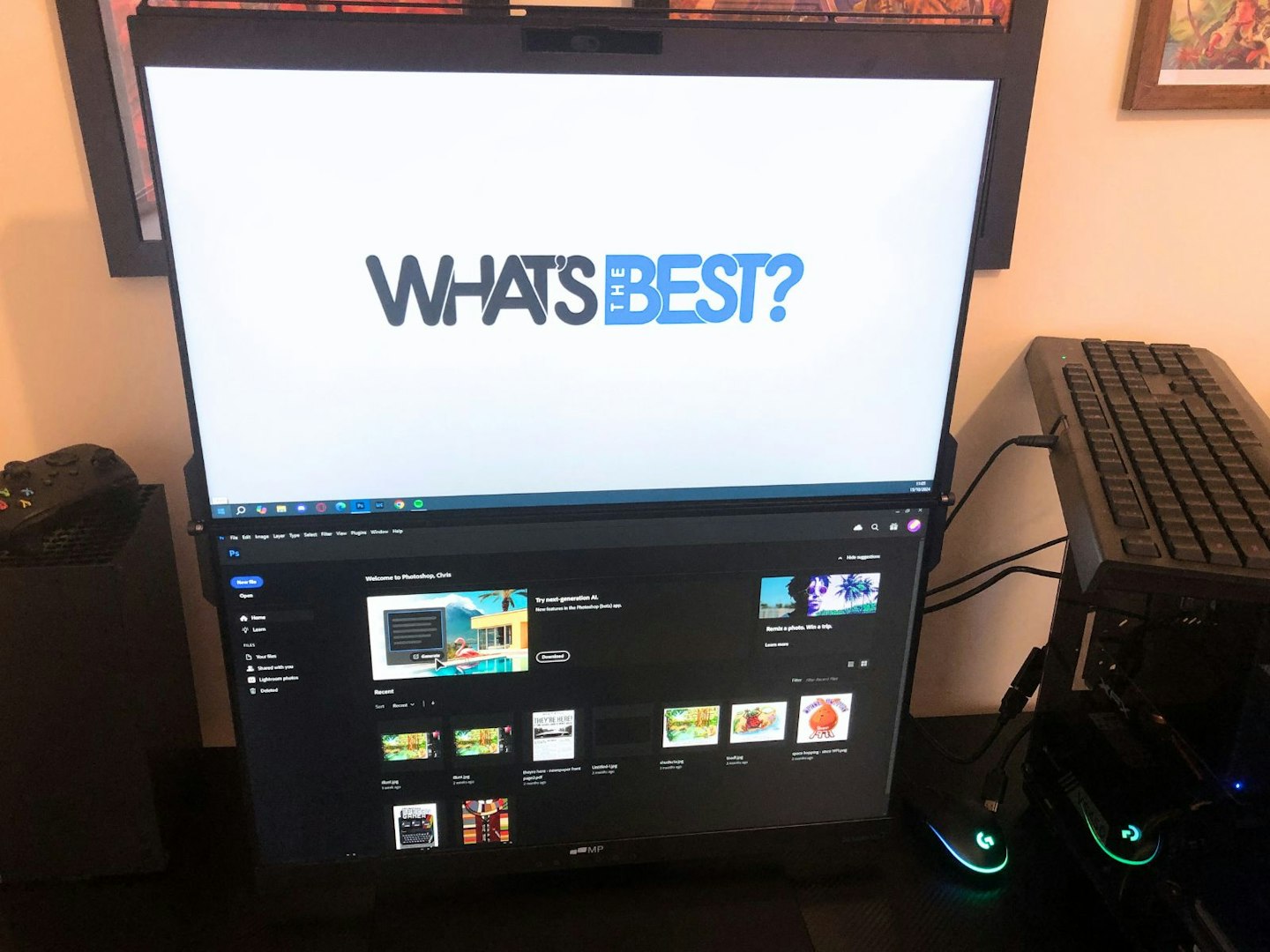
Mobile Pixels Geminos T dual stacked desktop monitor review
I’m used to smartphones and tablets getting lighter and tougher, but the Mobile Pixels Geminos T dual stacked monitor bucks that trend. You’d be forgiven for thinking that this is designed to fold up and travel with you, much like the brand’s Glance range or the Duex Max DS laptop screen I reviewed. Instead, the Geminos T ditches portability in favour of battleship-level toughness and rigidity. The full metal back panels and overall build reminds me of military tech you’d normally see mounted inside a heavy duty flight case – if nothing else, this thing is built to last.
I unfolded the Geminos T and tilted the lower touchscreen to a comfortable angle. It’s imposing and substantial, instantly delivering a ton of screen space courtesy of those twin 24-inch Full HD displays. There’s also an integrated webcam, a pair of speakers, a two-port USB hub and a card reader integrated into the base. I attached my monitors using HDMI, hooked up the PC via USB and powered on.
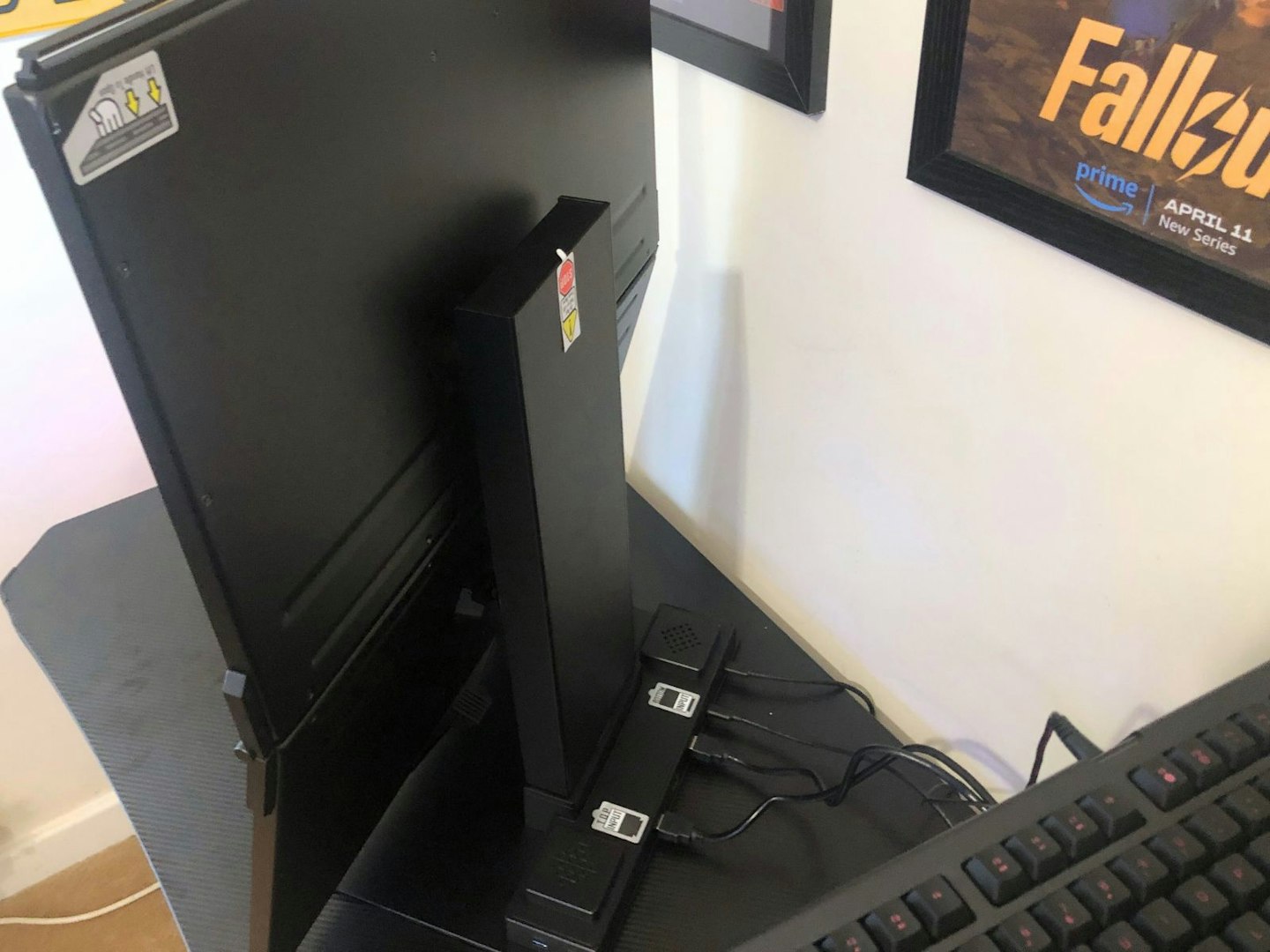
I then understood just who this product is aimed at: Office workers who need to multitask more effectively, boost their productivity and simplify their setup. Despite the draw of the dual displays for designers, they are only 1080p. That said, for casual YouTube sessions and browsing the screens were vibrant, detailed and bright with good viewing angles and no harsh reflections.
As for the sound, I wasn’t expecting top-tier audio from this – and that’s okay. The Mobile Pixels Geminos T has a different user in mind when it comes to audio and video. The speakers are clearly tuned for vocal clarity. I did listen to Spotify Premium though. Despite lacking in bass, it was quite listenable for anyone who wanted a low-level soundtrack to their working day.
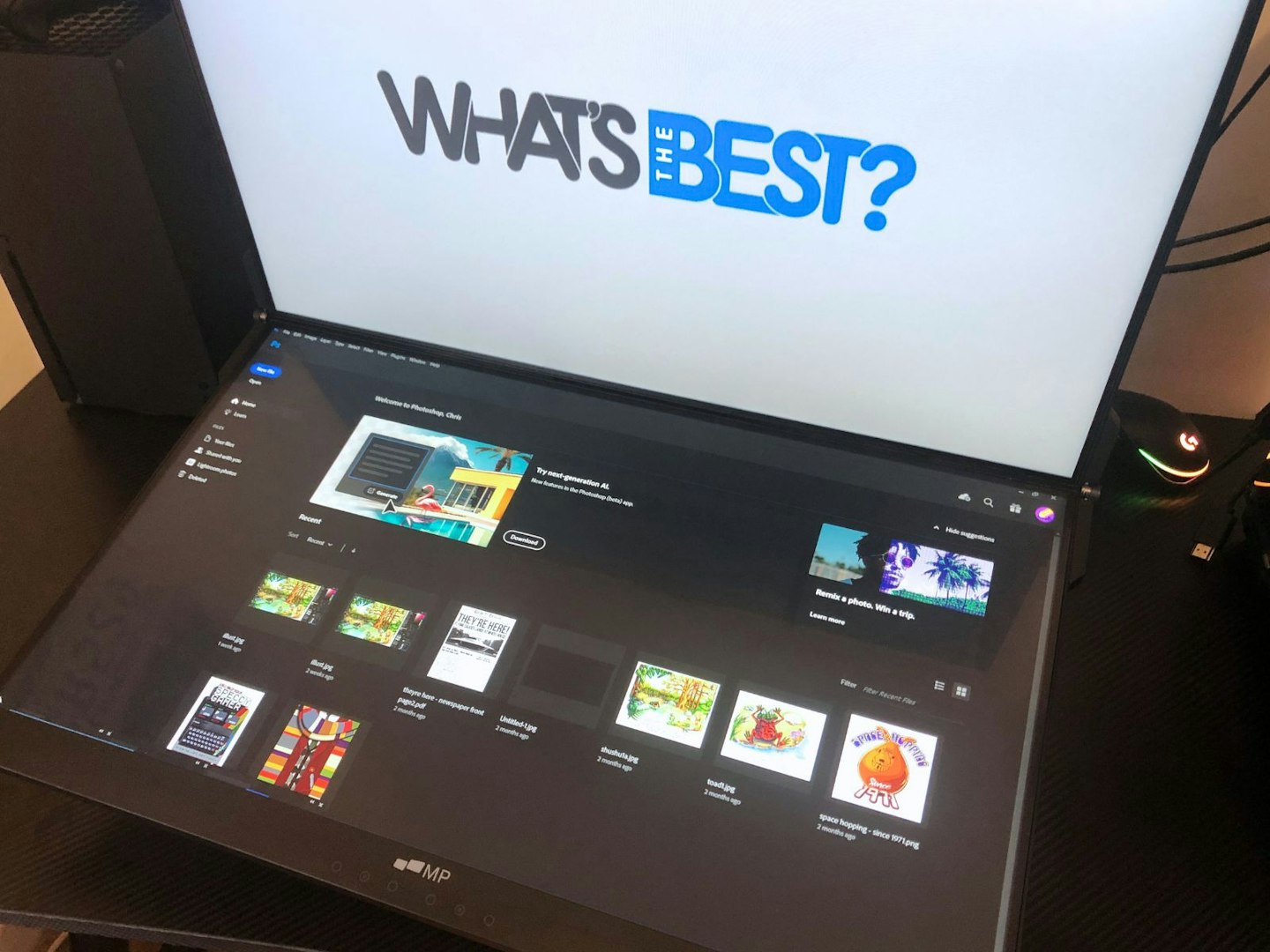
All in all, I think that Geminos T delivers a lot of integrated features to simplify your home or office setup. I found being able to use the top monitor for a Teams call while having a spreadsheet or document on the lower touchscreen to be invaluable. However, it isn’t a high-resolution, high colour-accuracy dual display monitor for creatives; nor is it for anyone who wants to enjoy premium quality media and entertainment. It is, however, the most robust office monitor I’ve ever tested.
Verdict: A tough and versatile productivity booster for office work that minimises desk clutter – just don’t try taking it on the commute or using it for high-resolution creative work.
www.laptopsdirect.co.uk
Pros
- Huge amount of screen real estate to boost multitasking speed and productivity
- An all-in-one solution that packs a lot of features and practicality into one unit
- Integrated webcam, mic and USB hub are a serious bonus
Cons
- Only 1080p resolution and much heavier than most at 10.8kg
| Resolution | 1920 x 1080 (FHD) per monitor |
| Screen size | 24 inches per monitor |
| Screen type | IPS LCD |
| Refresh rate | 60Hz |
| Response time | 5ms |
| HDR | Not supported |
| Ports | 2x USB-C, 2x HDMI, 1x USB-A, 1x USB-B |
| Colour support | 93% sRGB |
| Brightness | 250 nits |
| Viewing angle | 178° (horizontal/vertical) |
What’s good?
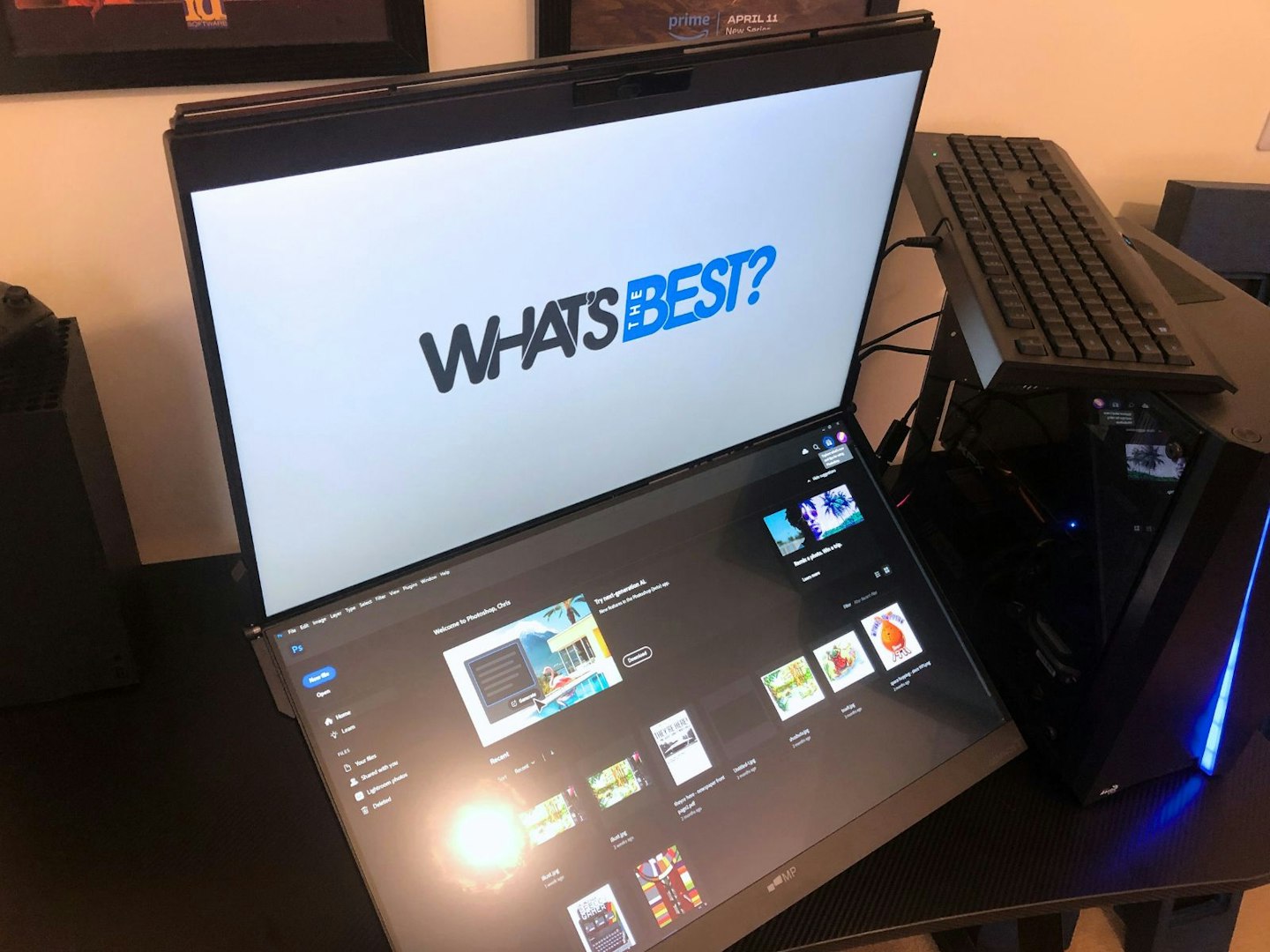
Given that both screens are fixed onto the upright metal stand, I was impressed by how far the bottom monitor could be tilted. If you wanted to, you could tilt it flat for a horizontal pseudo-tablet experience. I tried something similar with Photoshop as I felt the lower monitor was begging to be used for toolbars and panels. I was indeed able to use it this way, as well as for controlling my Spotify playlists.
The included Full HD webcam and mic were great performers too, with no issues or driver downloads for me on Windows 10. By far my favourite design feature are the displays’ slim bezels. With only a few millimetres to separate the two screens, my working environment was pretty much seamless. I really enjoyed being able to have video conference calls on one screen and still be able to see my documents and emails on the other as well, firmly delivering on the promise of boosting my productivity and ability to multitask.
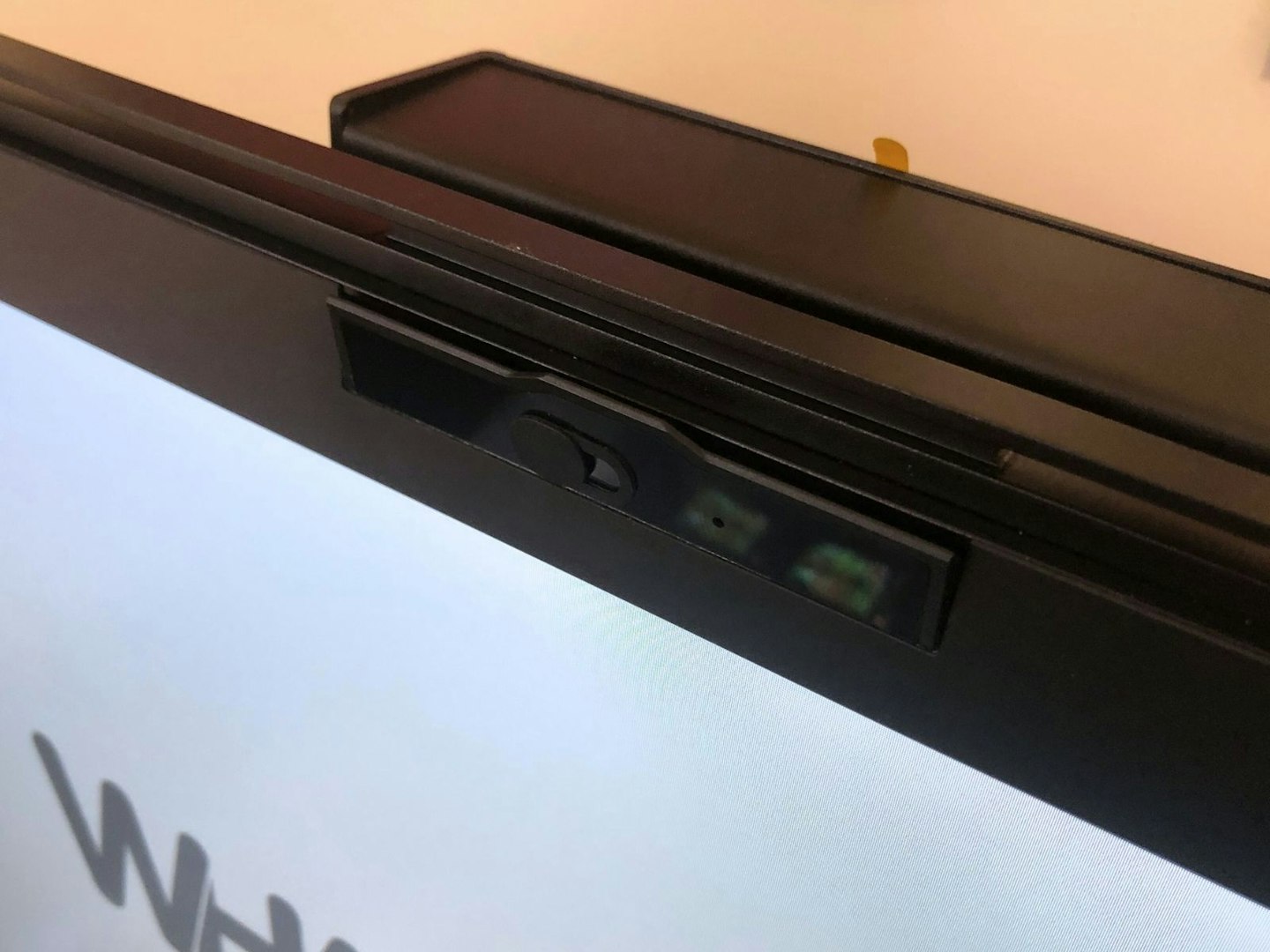
The image quality is excellent (for 1080p IPS panels running at 60Hz) with vibrant colours, decent 250 nit brightness levels and good viewing angles. I had no issues with eye strain or reflections either, thanks to the anti-glare coatings and blue light mode. However, for me the main benefit of the Geminos T is as a one-stop-shop for anyone who wants an efficient two monitor setup. You won’t have to buy two separate monitors with their own stands, or install a twin monitor mount, or worry about a lot of trailing wires and power leads. All in all, if you like the super-robust build and combination of features (and don’t mind a standard resolution) this two-in-one monitor is a winner.
What’s okay about the Mobile Pixels Geminos T dual stacked monitor?

Although both screens can and do sit quite high (and the lower one’s amazingly extreme tilt range), elsewhere there are very few adjustments to make. There’s no swivel anywhere on the stand and the top screen doesn’t tilt at all. However, in practice all of that’s quite well mitigated by the tilt and height adjustments. However, their height is mechanically linked to the tilt of the lower screen. So, if you want the top display at its highest point, you will have to sacrifice tilt on the other.
The webcam is good for picture quality, but the camera tilt is limited to 15 degrees. This will vary from user to user of course, but with the top monitor at its highest position, I had a bit too much headroom during video calls. Speaking of calls, the 3.5mm headphone port in the back of the base is a welcome, if a little hard to locate, privacy addition.

Two sets of flat membrane buttons on the lower monitor give you access to monitor settings. The placement is fine, but I found the lack of tactile buttons or a directional stick (as I found on the ASUS ProArt I reviewed recently) made tweaking things a bit more fiddly than usual. The options are good though, allowing me to balance the display to suit my needs.
Finally, a minor gripe with the handy USB hub and card reader slots. They’re mounted on the sides of the stand. I found them hard to use without getting up and peering down the back of my desk. I’m a fan of USB ports built into the edge of a monitor bezel. They may not be pretty, but they’re very usable when connecting devices on the fly.
Any negatives about the Mobile Pixels Geminos T dual stacked monitor?
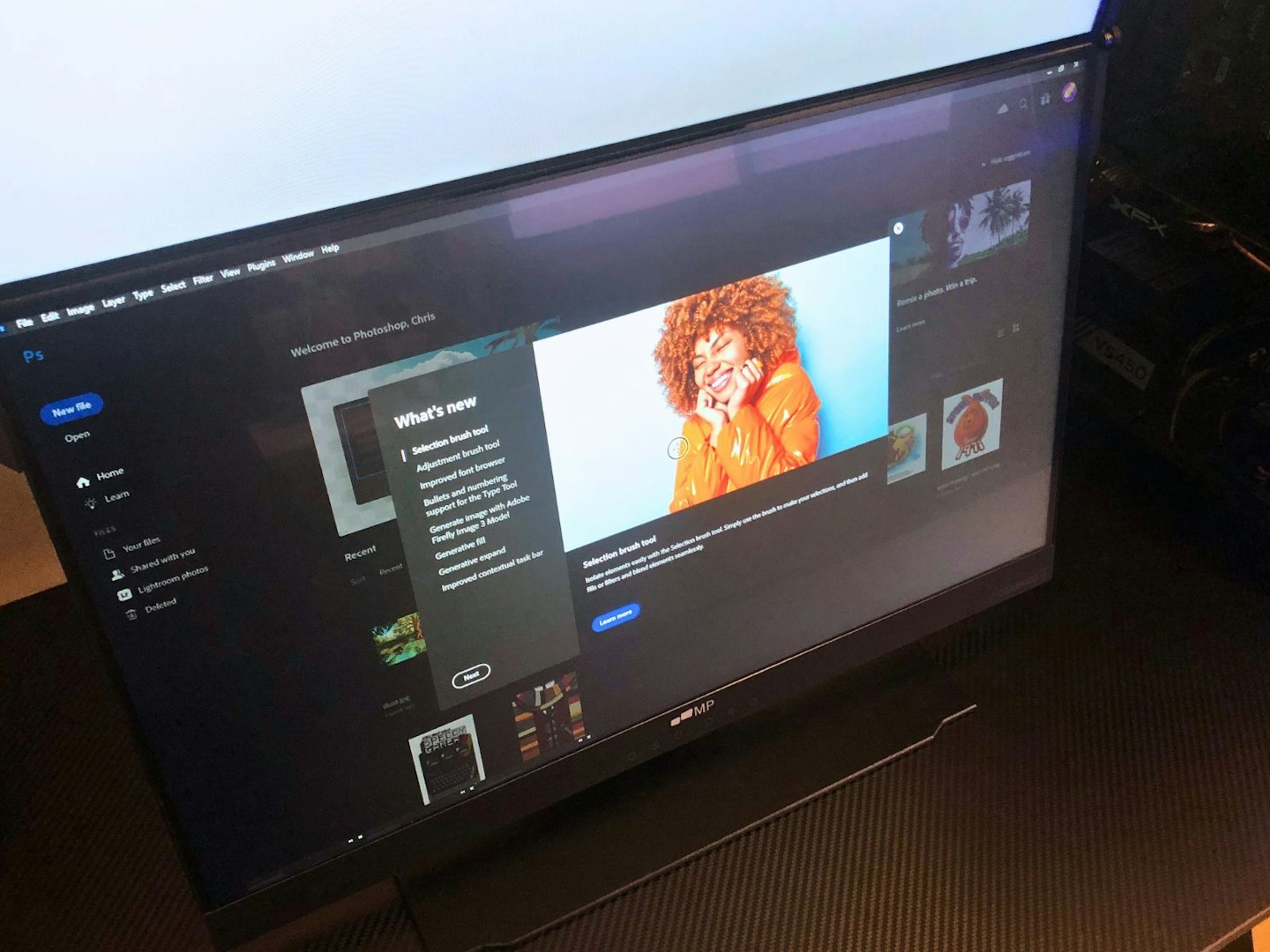
For all its sturdiness, I found myself wondering why Mobile Pixels hasn’t, well, made this more mobile. Other monitors in its range certainly are, and I would have loved to see this built in a similar way to the ASUS 14 OLED Duo I reviewed: Lighter and flatter.
While I appreciate the concept of the Geminos T, I don’t know why it needs to fold flat. Once folded, it has no convenient carrying handle (which, at a mighty 10.8 kg you would definitely need) and is over 15 cm in depth. This may make it a bit more convenient to slide into the boot of a car, but that’s the only benefit that I can see from a folding mechanism that only adds to its heft.

As for the sound, those 4 watt speakers are a welcome addition, but definitely not for music listening sessions or serious movie watching. Yes, they’re great for voices and background listening during your working day, but taking my Spotify playlist for a lengthy high volume spin soon began to grate.
Lastly, the vast majority of my Photoshop designs are well over the 1920x1080 pixels offered by each display. So, I think its use for designers is limited. If you like the whole Geminos concept Mobile Pixels have a Quad HD (2560 × 1440 pixels) version, the Geminos X, with a higher 75Hz refresh rate. As it is, the standard resolution and middling speakers on the Geminos T are great for office workers, but not for content creators or those who like high-end media and entertainment.
More items to consider
Please note: All prices are correct at the time of writing. Prices, stock and deals are subject to change without notice.
If you’re looking to double your monitor size without too many extra features, this LG 28-inch 28MQ780-B.AEK monitor does just that. You won’t find two independent screens, built in or a tiltable lower section, but it is Quad HD so it’s a higher resolution.
While this dual monitor from UPERFECT is clearly a mobile option without the integrated gadgetry of the Geminos, it is at least VESA mountable and has a slightly higher refresh rate.
If you want more screen space but don’t need it to be vertically stacked (and don’t need the integrated webcam and USB hub) then you could just opt for an ultra widescreen monitor like this one from AOC.
Who tested it?
Chris Duffill is one of our Senior Tech Writers. Having worked in both video production and graphic design, he has decades of working experience with computers, laptops, cameras and both monitor and TV technology.
How the product was tested
I tested the Mobile Pixels Geminos T dual stacked monitors for around a week. It was attached via HDMI and USB 3 to my home PC running Windows 10. Software used included Zoom, Word, Excel, Photoshop and Google Chrome. YouTube was used to test video performance and Spotify Premium for music audio. The touchscreen was tested with various applications, including Photoshop and Spotify, and for general Windows functions.
Why should you trust us?
At What’s The Best, our mission is to provide accurate and reliable reviews, ensuring our readers receive honest and transparent information about the best technology products available. Anything less would undermine our commitment to being a trusted source of unbiased product information.
Our dedicated in-house writing team comprises experts with extensive experience and a genuine passion for technology. Collectively, we have spent decades testing and writing about tech, leveraging our expertise in all our articles, advice pieces and reviews.
We maintain complete editorial independence and do not accept payment for product reviews. Our writers have full control over their content, ensuring that products are selected based solely on the needs of our readers. While we may earn commissions or other compensation from links on our website, this never affects our product choices. These links enable us to continue offering valuable consumer advice, without compromising the integrity of our reviews.
Chris Duffill is a Senior Tech Writer and Reviewer for What's The Best and Yours. His background includes writing, editorial, marketing, design, video production and photography.
He specialises in home entertainment and audiovisual tech, including speakers, amplifiers, turntables, streaming media players, and TVs. He is also one of our resident experts in computing (PCs, tablets, smartphones, smartwatches), DSLR photography and all kinds of digital cameras. He also writes about retro gaming, game consoles and various electronic gadgets. If it plugs in, lights up or makes a noise, he’ll write about it.
Subscribe to the What’s The Best Newsletter to keep up to date with more of the latest reviews and recommendations from the rest of the What’s The Best team.


















